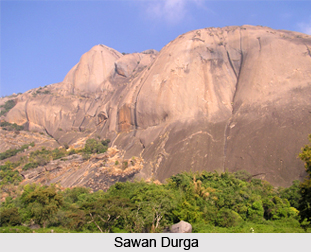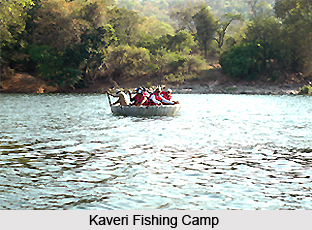
Tourism in Bengaluru rural District is a relaxing experience. There are a number of places located here which are of immense tourist interest, as they reflect the culture and tradition of the place. Some of the most prominent ones are discussed below.
Leisure Tourism in Bengaluru Rural District
The Devanahalli Fort was built in 1501 by Mallabairegowda of Avati clan, with the consent of `Devappa` a feudatory at Devanadoddi. Subsequently the name was changed to Devanahalli. The fort remained under the Avati rulers until 1747, when Mysore Dalawai, Nanjarajaiah, attacked the fort and captured it. Subsequently Devanahalli was usurped by the Marathas and reclaimed by the Mysore army under the leadership of Hyder Ali. During the reign of Tipu Sultan, Lord Cornwallis laid siege to the fort and took possession of it during the Mysore War of 1791.The original mud fort built by the Avati rulers was renovated and the present stone fort was built by Hyder Ali and Tipu Sultan after they recaptured the place from the Marathas.
Sawan durga is situated at a distance of around 50 Kms West of Bangalore near Magadi. In the Kannada language, Durga means fort. Sawandurga is one of the nine such forts around Bengaluru. This fort is the biggest monolith in all of Asia. There are several routes to the monolith at Sawan Durga, rising to the height of more than 1000ft. At the foothill there is a village by the same name and the forest around has been declared as Reserved Forest and there is found here a protected garden of the herbs of medicinal interest.
Channapatna, a small hamlet 46 Kms from Bengaluru on the Mysore highway, excels in lacquerware, a craft practised today by over 3000 local craftsperson. Lacquerware products include brightly coloured wooden toys, door curtains, powder boxes and napkin rings, besides a range of distinctive jewellery. These are a must visit for the tourists in Bengaluru district.
Janapada Loka in Karnataka or "Folk-Culture World" is a world of simplicity and art. Janapada Loka, a subsidiary of the Karnataka Janapada Parishath, is dedicated to preserve and promote folk art and culture. The complex has an art gallery, an open-air theatre, a studio and a museum. Situated 53 Kms on the Bengaluru-Mysore highway, this 15-acre complex is a treasure-trove of Karnataka`s folk heritage. The museum, drawn from the life and arts of a large number of tribal and rural folk across Karnataka, has an amazing collection of 5000 artefacts that represent the essence of Karnataka`s folk culture. The display includes an array of agricultural hunting and fishing implements, weapons, ingenious household gadgets, masks, dolls and shadow puppets.
 Nature Tourism in Bengaluru Rural District
Nature Tourism in Bengaluru Rural District
The Kaveri Fishing Camp is located at Bhimeswari. The Kaveri River at Bhimeswari abounds in a variety of fish including the Carnatic Carp and the Mahaseer. This place is a protected area for the fish, as the anglers are advised to release the fish, after catching them. The wild beauty of the river and the countryside, are sure to hook any tourist. Cottages run by the Jungle Lodges and Resorts make this place a definite tourist attraction.
Manchina Bele, Magadi, is about 36 Km from Bengaluru by road. Manchinabele Dam is situated in the midst of hills and forests. Even though it is not a big dam, it is a good picnic spot.
Mekedaatu in the Kanakapura talak is about 90 Km from Bengaluru via Kanakapura. Mekedatu means goat`s leap in Kannada. Mekedatu is a beautiful picnic spot where the Kaveri River and Arkavati River after their confluence at the Sangam, squeeze though a narrow gorge. Gushing waters, imposing landscapes, and untouched picnic spots is what Mekedatu is all about. The Kaveri River squeezing through a narrow gorge before traversing its south-bound terrain is a breathtaking sight.
Pilgrimage Tourism in Bengaluru Rural District
Shivaganga is around 8 Kms from Dabas Pet on the way to Tumkur District from Bengaluru on NH 4. Shivaganga gets its name from the various holy temples and holy places that it is home to. The spring water found here is considered to be the sacred water of the Ganga River. The hillock has few temples atop and a statue of Nandi carved out of single stone is a beauty. It is about two kilometres from the bottom of the hillock where there is a village to the top of the hill. There are many temples all along the way.
The place being a huge collection of boulders and solid granite rock structures, it invites not just pilgrims but rock climbers and adventure lovers as well. Though there are no bolted routes, there is plenty of climbing.






